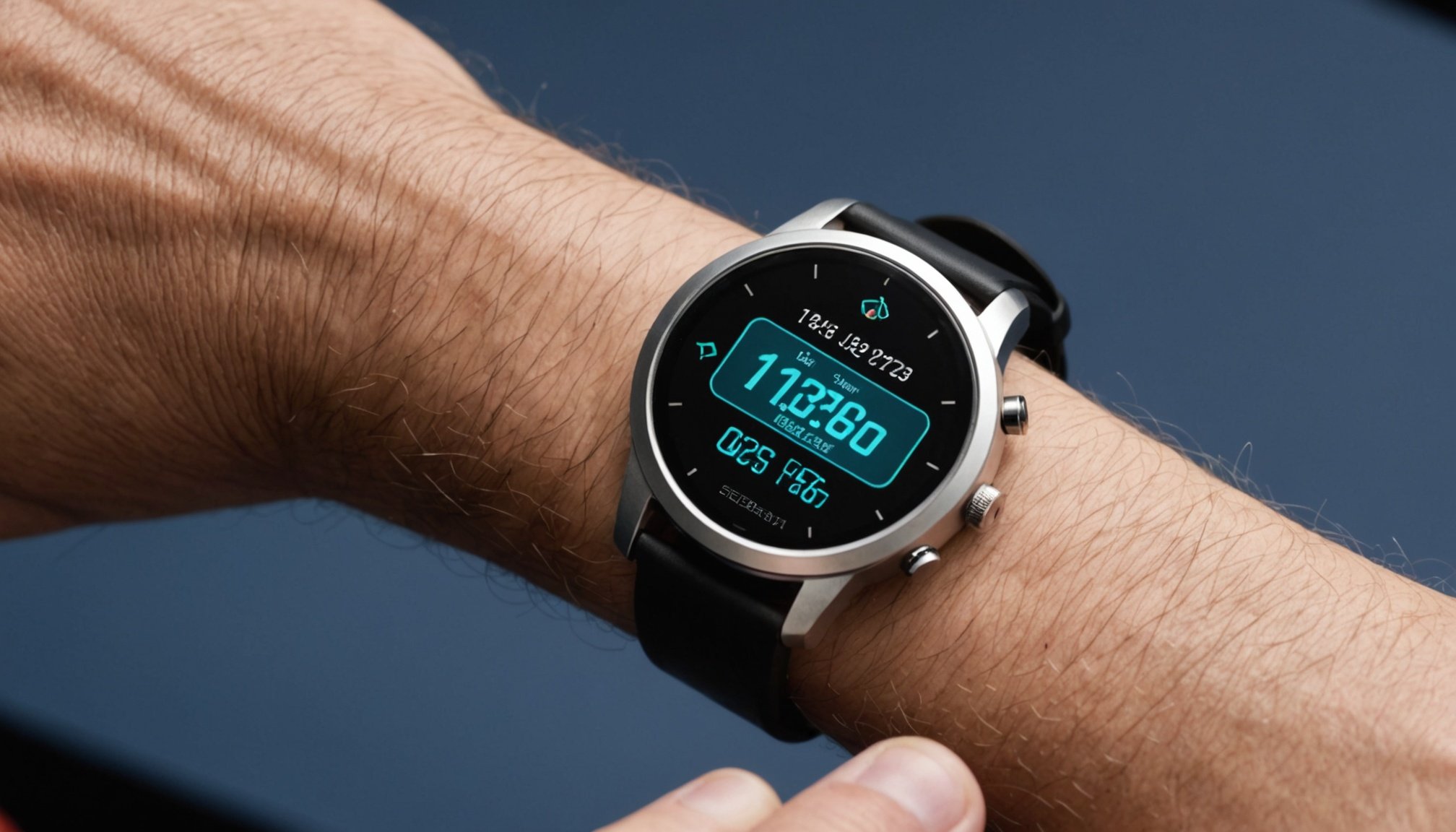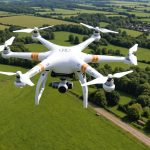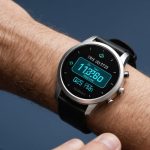Overview of Smartwatch Technology in Health Monitoring
The evolution of smartwatch health monitoring has been remarkable, driven by advancements in wearable technology. Initially, smartwatches focused on fitness tracking but have progressively incorporated comprehensive health metrics such as blood oxygen levels and heart rate monitoring. These innovations are powered by sophisticated sensors embedded in the devices, enabling real-time data collection and analysis.
Key manufacturers, including Apple, Fitbit, and Samsung, are leading the charge in integrating cutting-edge health tracking features into their smartwatches. Each brand brings unique technologies to the market, contributing to the competitive landscape and pushing boundaries in health monitoring.
Topic to read : Revolutionizing Air Quality Monitoring: The Future of Electrochemical Sensors
Existing health metrics tracked by smartwatches include:
- Heart rate variability
- Sleep patterns
- Step count and calories burned
The ability to monitor blood oxygen levels is particularly noteworthy, as it offers insights into respiratory health which is crucial for users with specific health conditions. Brands continue to refine these technologies, ensuring their devices provide reliable and actionable health data. As wearable technology advances, smartwatches are becoming essential tools in personal health management, empowering users to take proactive steps in maintaining and improving their well-being.
Also read : Revolutionizing Rural Emergency Services: The Impact of Drone Technology in the UK’s Remote Areas
Effectiveness of Blood Oxygen Monitoring in Smartwatches
Blood oxygen monitoring in smartwatches has revolutionised how users track their health metrics. These devices utilise red and infrared light to estimate blood oxygen saturation levels. The effectiveness hinges on the device’s sensor quality and algorithm precision. A key component for accurate readings is smartwatch accuracy—a synergy between hardware and software that ensures reliability.
Numerous studies reinforce the reliability of smartwatch oxygen sensors. For example, research comparing them to medical-grade pulse oximeters reveals that while smartwatches can provide comparable readings under certain conditions, variances may arise due to external factors such as skin tone or watch placement. Therefore, while useful for regular monitoring, they should not replace professional medical devices for critical assessments.
Some users may find a notable difference between smartwatch readings and those from traditional medical equipment. This is largely due to differing measurement techniques—smartwatches use reflectance oximetry while medical-grade devices use transmittance. Despite these differences, smartwatches remain a convenient tool to monitor blood oxygen levels consistently over time.
Recent advancements continue to refine this technology, further enhancing its relevance in everyday health monitoring. By understanding these mechanisms, users can make informed decisions about their health using wearable technology.
Recent Breakthroughs in Smartwatch Technology
Smartwatch advancements have undoubtedly transformed personal health technology, with manufacturers continually pushing boundaries. One area gaining significant attention is the enhancement of blood oxygen tracking. Recent developments have focused on improving the accuracy and reliability of this vital metric, leveraging more sophisticated sensors and algorithms. These innovations allow users to make better-informed decisions about their health, exemplifying the intersection of technology and wellness.
Leading brands like Apple, Fitbit, and Garmin have introduced features that refine health technology innovations in smartwatches. For instance, they have developed customized algorithms to mitigate discrepancies like skin tone variations and motion artifacts, which can affect readings. These advancements ensure more consistent and accurate data collection, fostering user confidence in the metrics provided.
User feedback indicates that innovations in blood oxygen tracking have been well-received, with many appreciating the detailed insights into their respiratory health. Expert reviews highlight that such innovations in health technology are steering the market towards more comprehensive and personalized health monitoring solutions.
Looking ahead, future trends in smartwatch health tracking are expected to include further integration with Artificial Intelligence and Machine Learning, promising even more tailored health insights and predictive analytics capabilities. These advancements are slated to redefine personal health management strategies in significant ways.
Comparison with Traditional Blood Oxygen Measurement Methods
Traditional blood oxygen measurement methods, such as pulse oximeters, remain a gold standard in clinical settings, renowned for their accuracy. These medical devices employ transmittance oximetry, where light passes through the skin, measuring oxygen saturation effectively. However, they require careful positioning, typically on fingers or earlobes, to ensure precision.
In contrast, wearable technology, like smartwatches, utilizes reflectance oximetry. Instead of light passing through, it reflects off the skin surface to estimate blood oxygen levels. This method offers convenience and the ability to monitor continuously throughout the day. However, factors like skin tone, movement, and watch placement can affect smartwatch accuracy.
Wearable tech provides the advantage of ubiquitous monitoring, allowing users to integrate health tracking seamlessly into daily life. Yet, it does not entirely replace the clinical reliability of medical devices.
The practical benefits of smartwatches include ease of use and the potential for tracking additional health metrics like heart rate and sleep patterns, offering a holistic view of one’s wellness. Though not a substitute for medical-grade devices in critical situations, smartwatches serve as valuable tools for non-invasive, regular health monitoring, empowering users to stay informed about their health.
Introduction to Synthetic Aperture Radar Technology
Synthetic Aperture Radar (SAR) is crucial in the realm of earth observation technology. It works by using radar waves to create images of the Earth’s surface, offering detailed and all-weather capabilities that optical sensors cannot match. Historically, SAR’s development was spurred by the need for precise and reliable remote sensing during times when cloud cover obscures satellite imagery.
The basic principle involves emitting radar pulses and measuring the time it takes for the signals to bounce back. These signals are then processed to generate high-resolution images. This ability makes SAR invaluable for various applications, from monitoring deforestation, mapping landslides, to precise change detection.
SAR technology has significantly advanced over time, allowing for better resolution and new features like interferometric SAR (InSAR), which measures ground deformation accurately. Researchers are continually pushing the technology’s boundaries, exploring everything from smaller, more efficient sensors to integration opportunities with other earth observation technologies.
Given its versatility, SAR remains at the forefront of remote sensing research, with ongoing advancements enhancing its utility for both scientific and commercial applications. SAR’s development and application illustrate its critical role in observing and understanding our world.
Applications and Benefits of Synthetic Aperture Radar
Synthetic Aperture Radar (SAR) has revolutionised earth observation applications, offering unique capabilities for monitoring environmental changes. Utilising radar waves allows for the creation of detailed images irrespective of weather conditions, making it indispensable in disaster management. This technology enables rapid response by accurately capturing the extent of flooding, deforestation, or seismic shifts.
A significant benefit of SAR is its ability to operate day and night, unlike traditional optical sensors, ensuring continuous data availability. This continuous monitoring aids in tracking long-term environmental changes and assessing natural disaster impacts with accuracy. For instance, SAR can detect and monitor landslides and other geological phenomena, offering critical data for timely interventions.
In terms of impact, SAR benefits are profound in areas of disaster response. Emergency services can leverage SAR data for real-time decision-making, ensuring resources are allocated efficiently. Additionally, its ability to penetrate cloud cover surpasses many other remote sensing technologies, providing a clear advantage.
As SAR technology continues to evolve, improvements in resolution and efficiency promise to further enhance its utility. This positions SAR as a vital tool in both global scientific research and practical applications, offering unparalleled insights into our planet’s dynamic processes.
Future Prospects of Synthetic Aperture Radar in Earth Observation
The future of SAR (Synthetic Aperture Radar) holds immense promise in advancing remote sensing capabilities. Emerging technologies are integrating SAR with enhanced data collection techniques, paving the way for improved earth observation. A notable trend is the development of smaller, more effective SAR sensors, enabling satellite constellations to gather unprecedented volumes of data. This innovation supports continuous monitoring and provides detailed insights into environmental dynamics.
As SAR technology evolves, it raises ethical and practical considerations, particularly regarding privacy and data ownership. These factors necessitate robust frameworks to balance technological benefits with societal responsibilities. Ethical concerns stem from SAR’s ability to capture detailed images, prompting discussions on regulatory measures.
Looking ahead, SAR is expected to make significant contributions to climate change monitoring. Its capability to monitor deforestation, ice melt, and sea-level rise is vital for researchers and policymakers. These insights inform strategies to address global environmental challenges effectively.
The integration of Artificial Intelligence and Machine Learning with SAR will further enhance its utility, allowing for sophisticated data analysis and predictive modeling. This synergy will enable swift responses to ecological changes, reinforcing SAR’s status as a cornerstone in earth observation research and practical applications.








